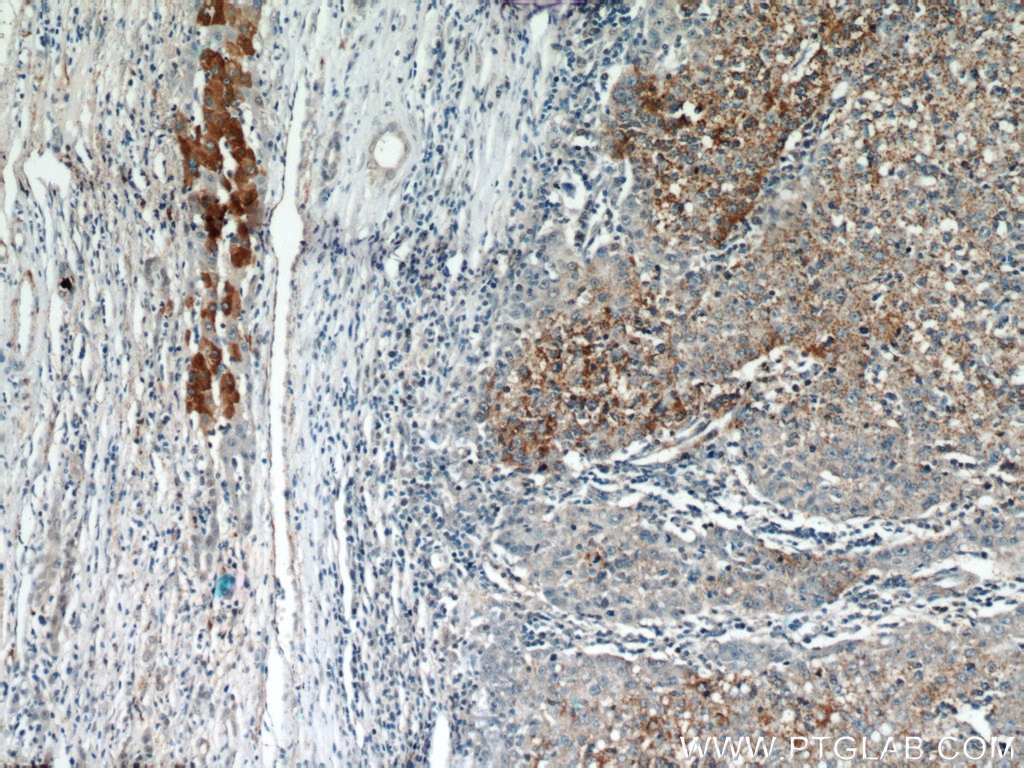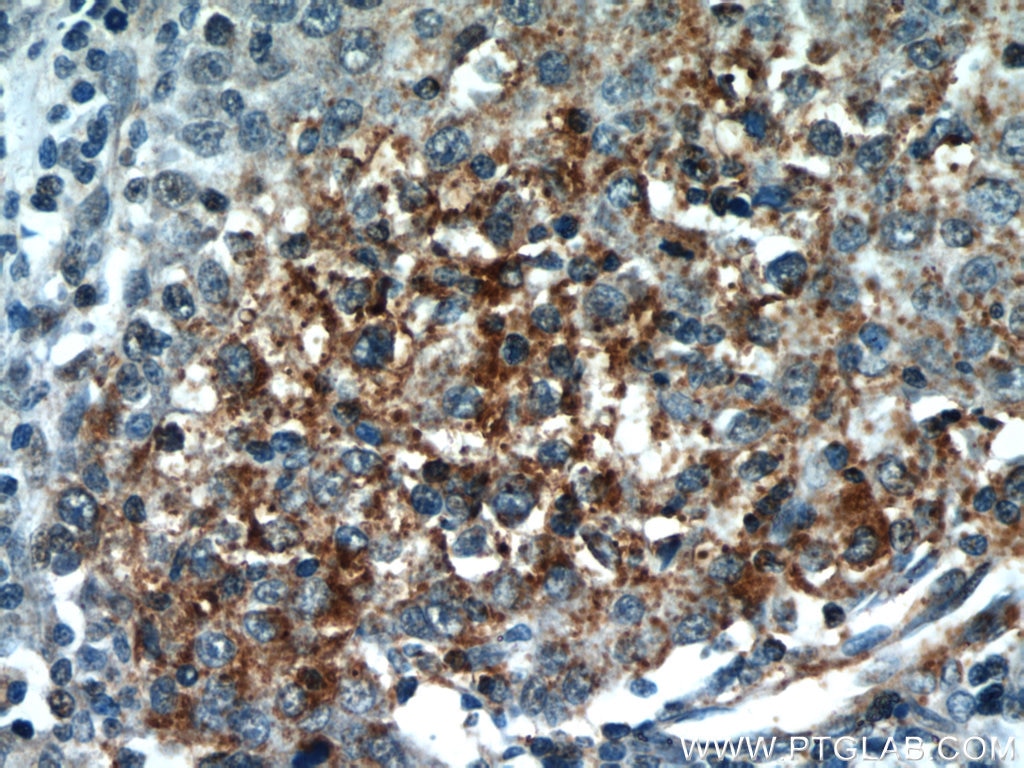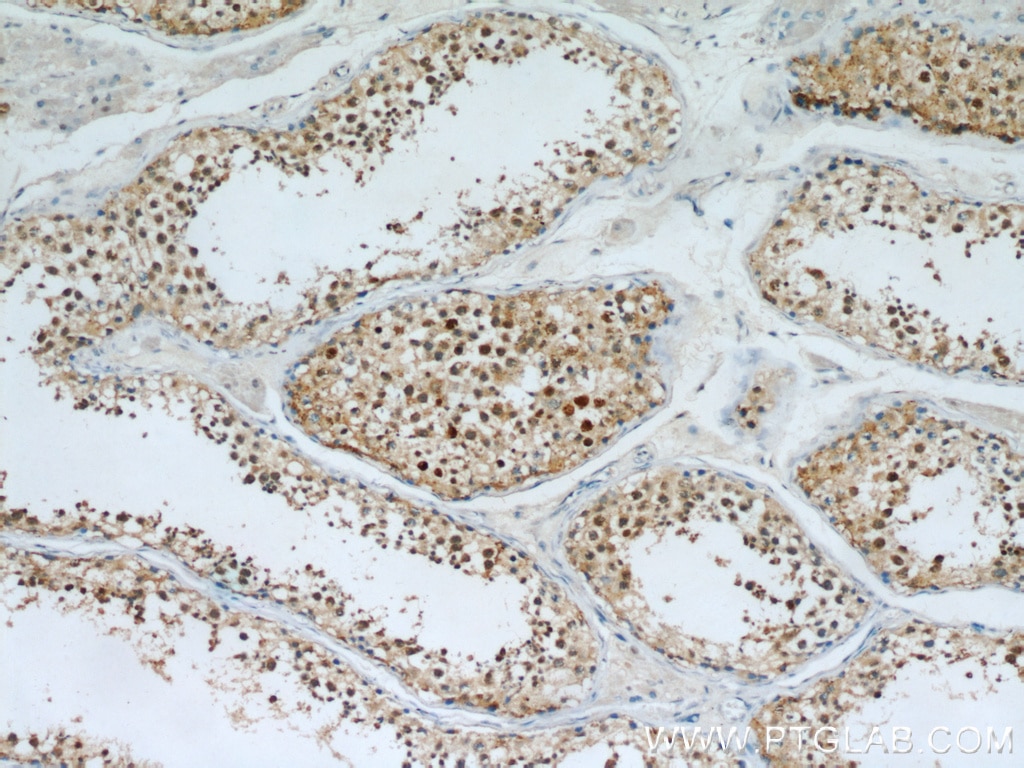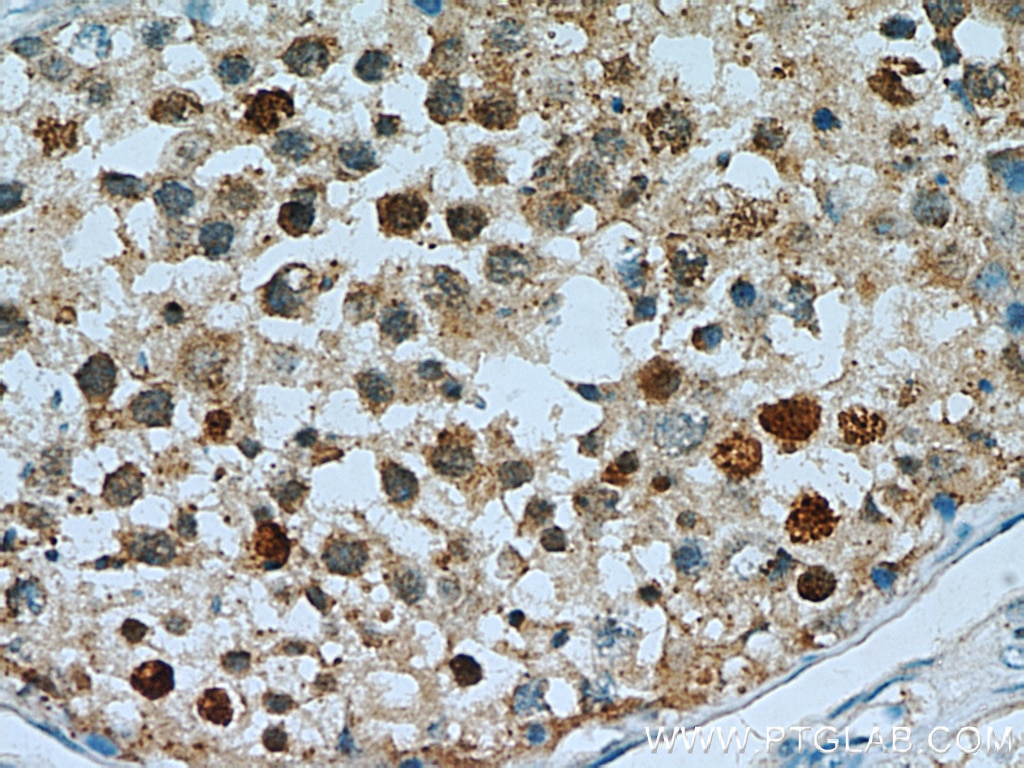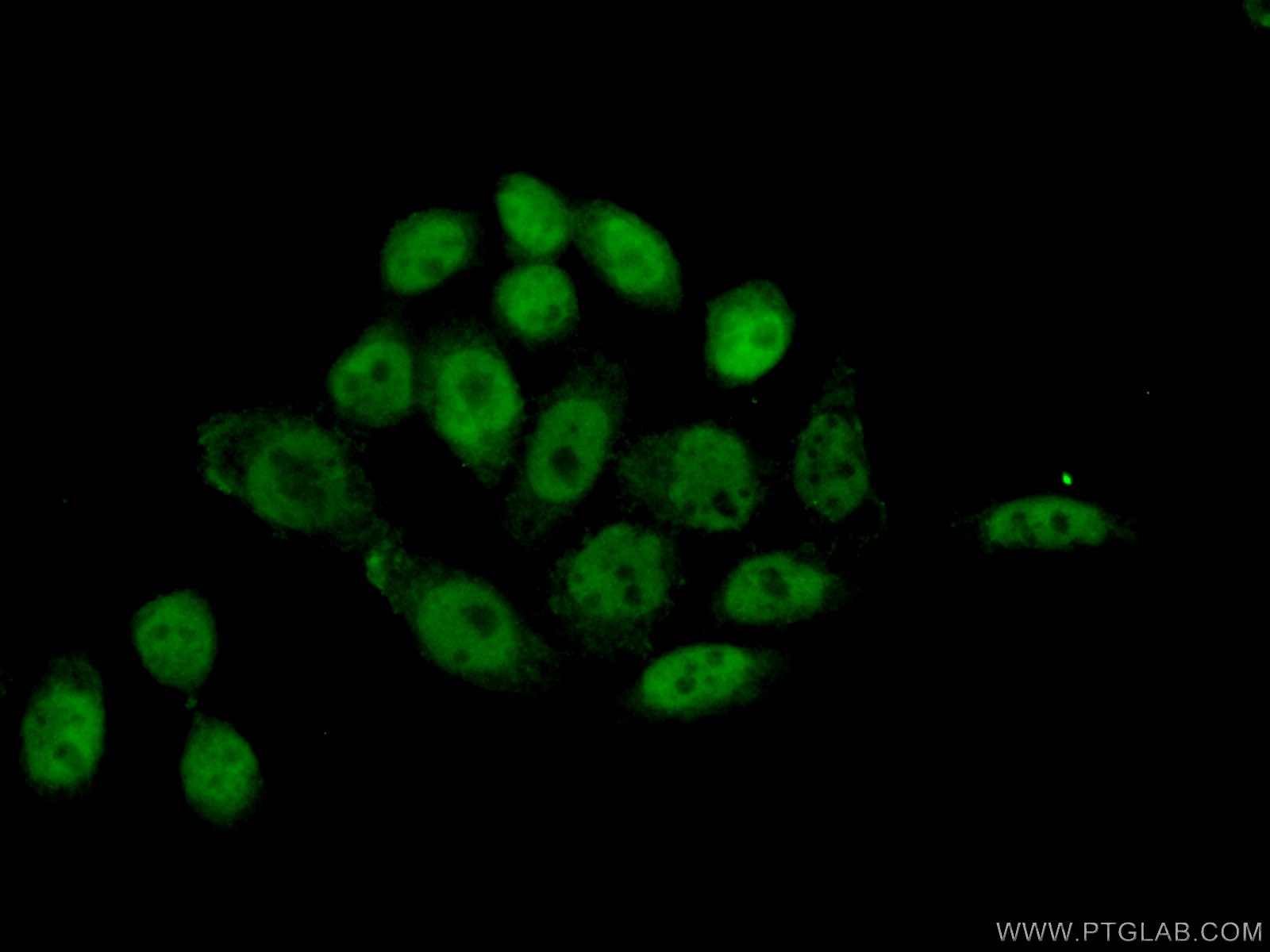Anticorps Polyclonal de lapin anti-PI3 Kinase p110 Beta
PI3 Kinase p110 Beta Polyclonal Antibody for IF, IHC, ELISA
Hôte / Isotype
Lapin / IgG
Réactivité testée
Humain et plus (1)
Applications
WB, IF, IHC, ELISA
Conjugaison
Non conjugué
N° de cat : 21739-1-AP
Synonymes
Galerie de données de validation
Applications testées
| Résultats positifs en IHC | tissu de cancer du foie humain, tissu testiculaire humain il est suggéré de démasquer l'antigène avec un tampon de TE buffer pH 9.0; (*) À défaut, 'le démasquage de l'antigène peut être 'effectué avec un tampon citrate pH 6,0. |
| Résultats positifs en IF/ICC | cellules HeLa |
Dilution recommandée
| Application | Dilution |
|---|---|
| Immunohistochimie (IHC) | IHC : 1:20-1:200 |
| Immunofluorescence (IF)/ICC | IF/ICC : 1:50-1:500 |
| It is recommended that this reagent should be titrated in each testing system to obtain optimal results. | |
| Sample-dependent, check data in validation data gallery | |
Applications publiées
| WB | See 9 publications below |
| IHC | See 2 publications below |
| IF | See 1 publications below |
Informations sur le produit
21739-1-AP cible PI3 Kinase p110 Beta dans les applications de WB, IF, IHC, ELISA et montre une réactivité avec des échantillons Humain
| Réactivité | Humain |
| Réactivité citée | Humain, souris |
| Hôte / Isotype | Lapin / IgG |
| Clonalité | Polyclonal |
| Type | Anticorps |
| Immunogène | PI3 Kinase p110 Beta Protéine recombinante Ag16456 |
| Nom complet | phosphoinositide-3-kinase, catalytic, beta polypeptide |
| Masse moléculaire calculée | 1070 aa, 123 kDa |
| Poids moléculaire observé | 110 kDa |
| Numéro d’acquisition GenBank | BC114432 |
| Symbole du gène | PI3 Kinase p110 Beta |
| Identification du gène (NCBI) | 5291 |
| Conjugaison | Non conjugué |
| Forme | Liquide |
| Méthode de purification | Purification par affinité contre l'antigène |
| Tampon de stockage | PBS avec azoture de sodium à 0,02 % et glycérol à 50 % pH 7,3 |
| Conditions de stockage | Stocker à -20°C. Stable pendant un an après l'expédition. L'aliquotage n'est pas nécessaire pour le stockage à -20oC Les 20ul contiennent 0,1% de BSA. |
Informations générales
PIK3CB(phosphatidylinositol 4,5-bisphosphate 3-kinase catalytic subunit beta isoform) is also named as PIK3C1, PI3K-beta, p110beta. The gene encodes a 1070 amino acid protein which belongs to the PI3/PI4-kinase family. Phosphoinositide 3-kinases (PI3Ks) have been implicated as participants in signaling pathways regulating cell growth by virtue of their activation in response to various mitogenic stimuli. The class I PI3 kinases are heterodimers composed of 110 kDa catalytic subunits that associate with regulatory adaptor proteins. Four class I catalytic subunits have been identified, PIK3CA (p110α), PIK3CB (p110β), PIK3CD (p110δ) and PIK3CG (p110γ)(PMID:19177002).
Protocole
| Product Specific Protocols | |
|---|---|
| IHC protocol for PI3 Kinase p110 Beta antibody 21739-1-AP | Download protocol |
| IF protocol for PI3 Kinase p110 Beta antibody 21739-1-AP | Download protocol |
| Standard Protocols | |
|---|---|
| Click here to view our Standard Protocols |
Publications
| Species | Application | Title |
|---|---|---|
Cell Mol Gastroenterol Hepatol Mannan-binding lectin via interaction with cell surface calreticulin promotes senescence of activated hepatic stellate cells to limit liver fibrosis progression. | ||
Biochem Pharmacol TANGO1 interacts with NRTN to promote hepatocellular carcinoma progression by regulating the PI3K/AKT/mTOR signaling pathway | ||
J Ethnopharmacol Root extract of Hemsleya amabilis Diels suppresses renal cell carcinoma cell growth through inducing apoptosis and G2/M phase arrest via PI3K/AKT signaling pathway | ||
Cells Determination of WWOX Function in Modulating Cellular Pathways Activated by AP-2α and AP-2γ Transcription Factors in Bladder Cancer. | ||
J Zhejiang Univ Sci B Silencing of DsbA-L gene impairs the PPARγ agonist function of improving insulin resistance in a high-glucose cell model. | ||
Mol Med Rep EGFR‑associated pathways involved in traditional Chinese medicine (TCM)‑1‑induced cell growth inhibition, autophagy and apoptosis in prostate cancer. |
